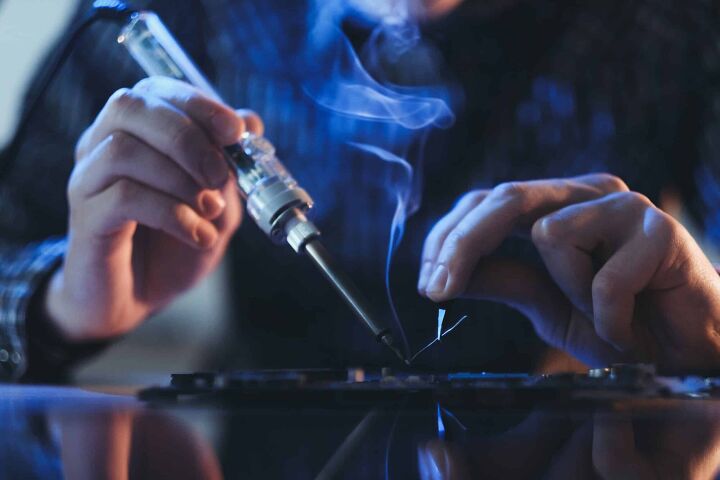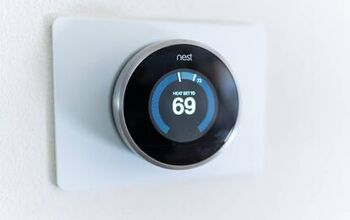Can You Solder Without Flux? (Yes! Here's How To Do It)

Soldering is an essential skill for any DIY enthusiast. It is useful for home electronics, auto repair, and more. Sometimes, though, not having everything you need, such as flux, can put a stop to your work and lead to interruptions.
Yes, solder can be used without flux. To do so, you will need something other than flux to break down the oxides on the metal surface, without which your surface may be damaged or not properly cleaned. The best alternative to flux when soldering is petroleum jelly which is anti-corrosive and will not damage your material.
There are a number of ways that you can also make your own flux at home. In this article, we will explain why you need to use flux when soldering. We will also offer some alternatives you can make yourself.
Related Content: How To Remove Solder Without A Soldering Iron | How To Re-Solder A Copper Pipe Joint Without Removing It
What is Flux?
Flux is a catch-all name for any substance in metallurgy that allows for a stronger bond. All metals have oxides on them that must be cleaned off in order to facilitate a clean fusion. A flux clears these oxides and gives you a perfectly flat surface.
Most modern organic fluxes are made of purified and refined pine sap. This is the oldest type and continues to be used to this day. This type of flux is commonly known as rosin. There are also other organic fluxes made with citric and lactic acids.
Several inorganic fluxes are used for more industrial applications. Strong metals such as brass and copper will require a synthetic acid flux in order to be soldered. This will remove not only oxidation but also corrosion and other residues that build up on these metals.
Do You Really Need Flux?
In order to ensure a strong bond, you need to have a surface free of metal oxides. No matter how much you clean a metal surface, you will still need some sort of flux how to solder to stick. Without this, a solder joint will not be strong or conductive enough.
One of the other reasons that you need flux is that the solder will chase a heat source. This means that it will be difficult to get the molten solder off of your iron without flux. Molten solder sticks to the metal much better if there are no oxides blocking it.
Depending on what type of job you’re doing, you may be able to get by without using any flux. However, this solder joint will be difficult to do and will not be strong. This is only acceptable if the joint is going to be temporary.
Rosin Core Solder Vs. Solid Core Solder
The good news is that most modern solder is made with a rosin core. Rosin is the same organic material as flux so it is already built into the solder. If you have this type, you do not need to use more flux. The solder will clean the surface as it melts.
Acid core solder will also clear metal surfaces of oxides as well as corrosive by-products. The acid acts as a flux and is able to clean as it adheres. Because of this, it is recommended for strong metals like brass, steel, and copper.
Solid core solder has no rosin and requires the use of flux. Trying to use a solid core solder without flux will result in a practically useless joint. The solder will not cling to the surfaces and the oxides will break away causing the joint to fail.
Ways to Solder Without Flux
Luckily, if you find yourself with only a solid core solder and no flux, there are ways to make your own. The nice thing about making your own flux is that you can be certain it is made with natural materials. This is a major plus if you are concerned with the environment.
Petroleum Jelly
Petroleum jelly works just as well as a store-bought flux. It will clear your metal surfaces of any oxides and will melt away with the heat. Because of this, it is commonly used by many electronics enthusiasts.
Petroleum jelly is a mixture of waxes and mineral oils that has cleaning as well as anti-corrosive properties. It is good for all kinds of applications around the house and in the shop. Regardless of how much you solder, it is always good to have around.
The best thing about using this instead of flux is that it tends to be much cheaper. If you are doing a lot of soldering and find yourself spending a lot on flux, this could be a good alternative. Petroleum jelly is generally half as expensive as store-bought flux.
Lemon Juice Flux
You can also make your own flux using lemon juice. The citric acid in lemon juice is able to clean oxides off metal for a strong bond. The biggest upside to this method is that it is incredibly effective. Acid fluxes are generally used for heavy-duty plumbing projects.
To make a lemon juice flux, cut 6 lemons in half and juice them. Strain the juice with a juice strainer and stir it for 20 seconds. Then, strain it again and stir it for another 20 seconds. It should be noted that you should not refrigerate this flux. It will lose its potency.
This homemade flux has the benefit of being cheap and incredibly easy to make. You can also use store-bought lemon juice if you like, but it may be cheaper to use petroleum jelly at that point. To apply it, simply dab onto the area you need to solder with a cotton swab.
Pinecone Flux
Pinecone flux can be made with 10-15 pinecones and some denatured ethyl alcohol. The natural pine tar in the cone leaves works as a flux and can be extracted.
Cut the cone leaves and place them in a container, then pour the alcohol over the leaves and let them sit overnight. In the morning, stir the container and strain the leaves from the mixture. Filter the mixture through a coffee filter and you now have an eco-friendly pine flux.
Scraping Method
If you don’t have any of the above materials, you can always resort to the scraping method. This should be done only as a last-ditch effort. You should also not expect these joints to be very strong.
Before soldering anything, scrape the surfaces with a blade or small chisel. This will have to be done over and over again to ensure that all the oxidation is gone. This method tends to take a long time and isn’t very effective.
Video: Here’s How to Do It
Related Questions
Why does my solder not stick?
Your solder could be not sticking for a number of reasons. If you are using the scraping method, double-check that you have scraped enough. If you have, check that the materials you are using can be soldered together in the first place.
What metal cannot be soldered?
The two most common metals that are difficult to solder are aluminum and stainless steel. However, with a very powerful acid flux, they can be properly cleaned of oxides and soldered. Zinc has a relatively low melting point and will melt before it will take a solder joint.
Does solder add resistance?
Solder joints do add a small amount of electrical resistance. Because of this, it is important that you plan accordingly, especially around battery terminals. More resistance means the circuit will get hotter, which can result in all kinds of problems.
Related Guides

I am a writer and editor from The Bay Area, CA. When I'm not typing, I enjoy hiking, woodworking and gardening. I love sharing tips and discovering new trends in home improvement.
More by Michael Oconnor



























